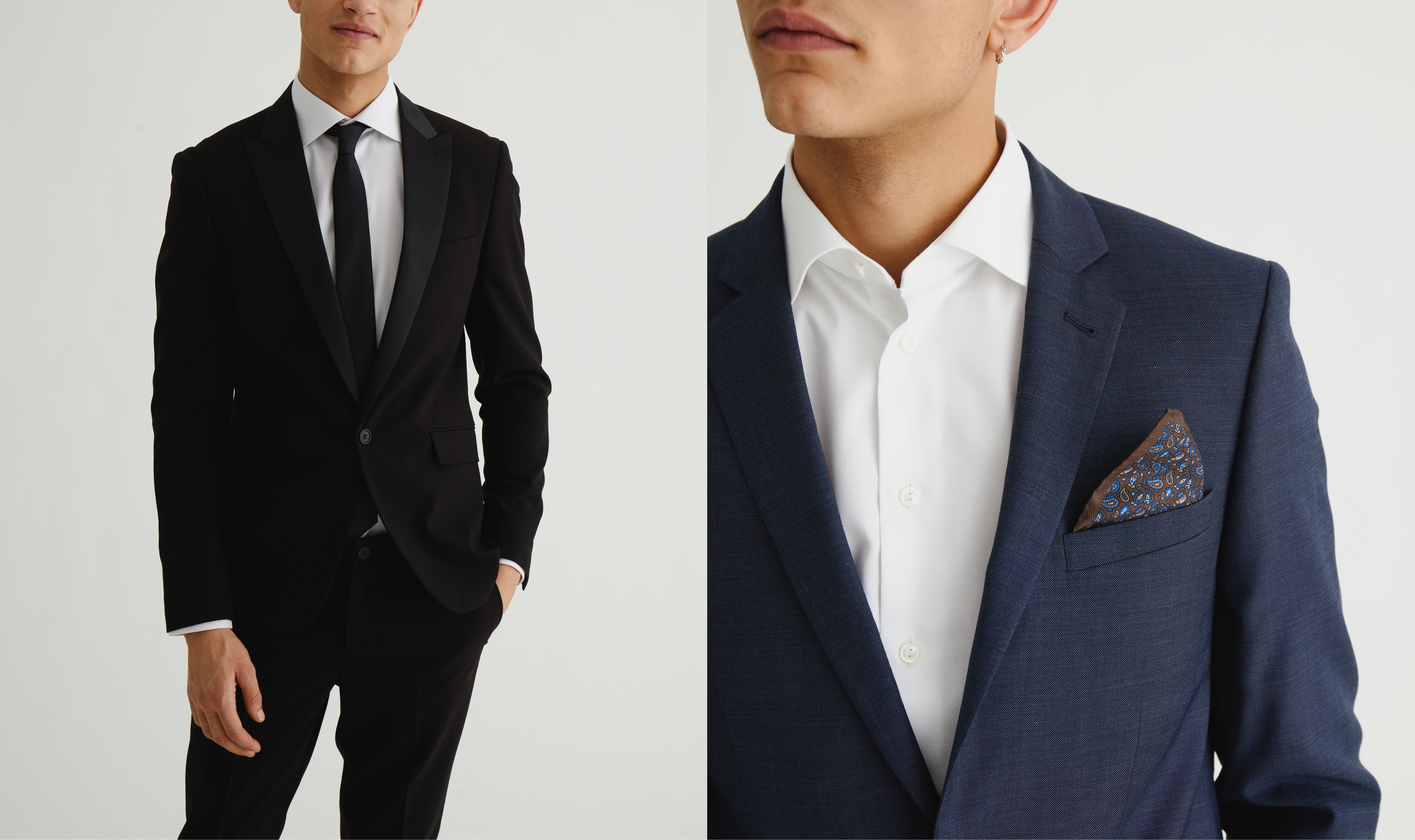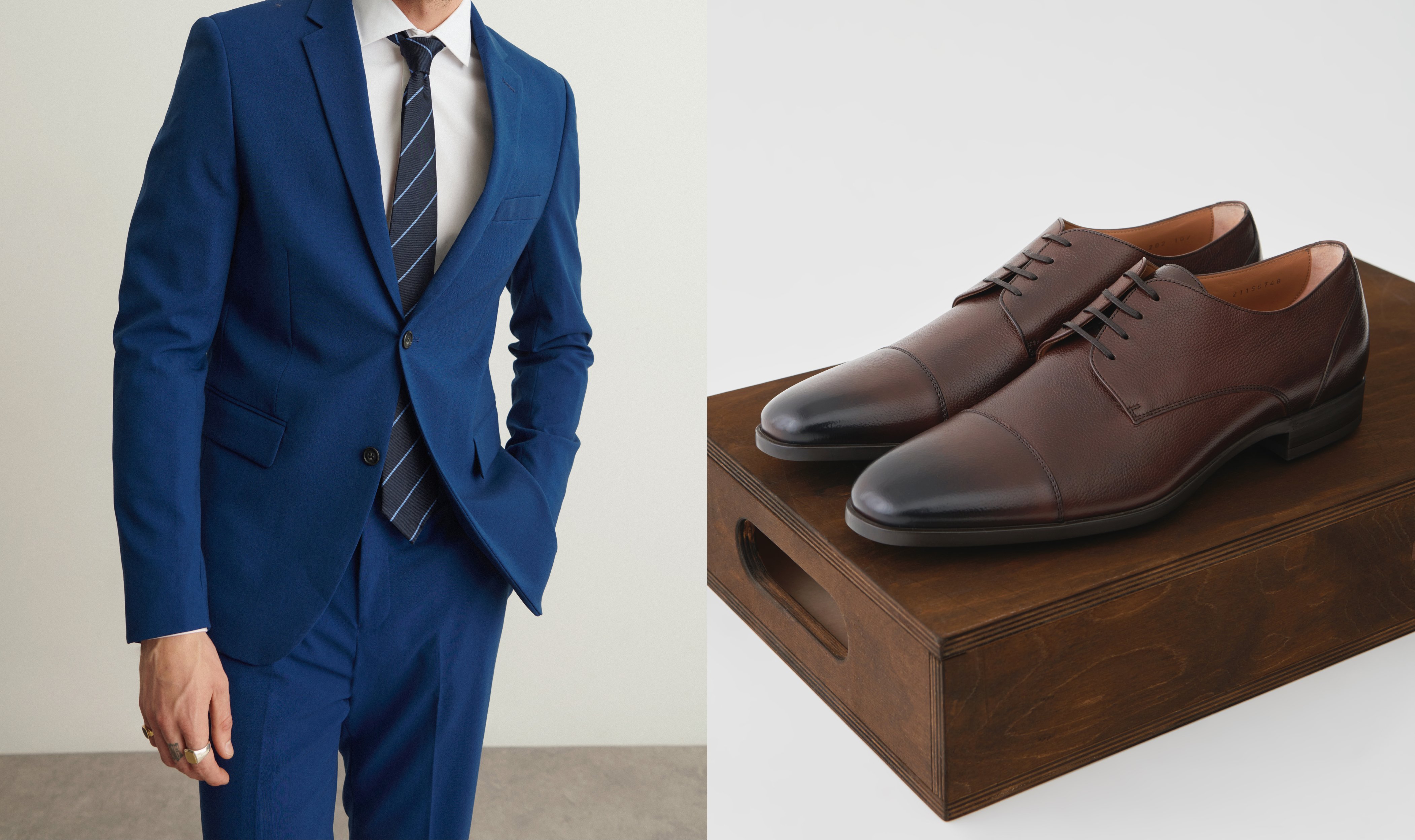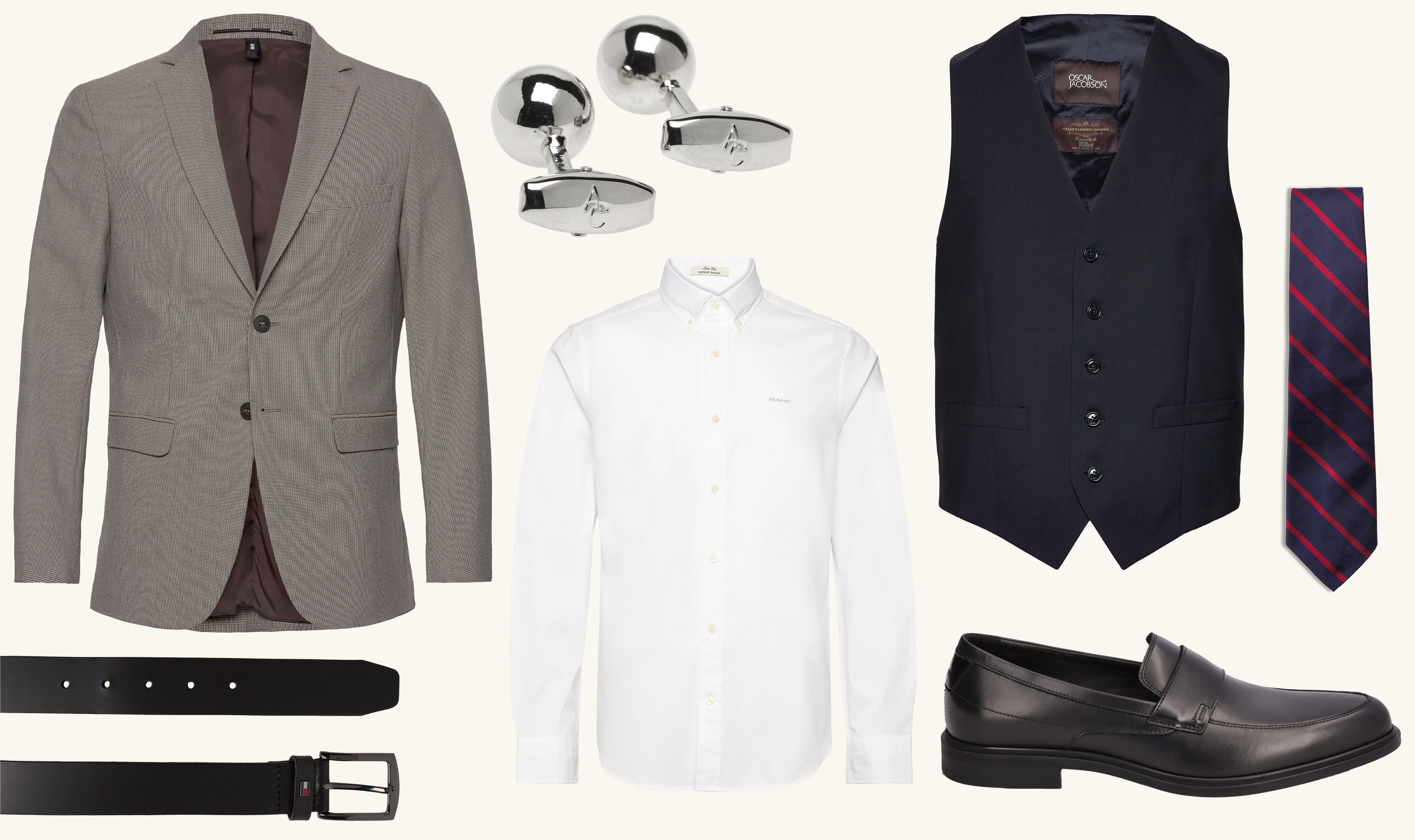

4 easy ways to buy a suit online.
Let’s face it, buying a suit is not an easy exercise, let alone online. Here we break down the key things you need to consider before adding to cart. It’s easy when you know how.

Ordering any type of suit without measurements is like driving blindfolded. The simplest way to find yours is to measure an existing suit that you like the fit of. If the suit you’re looking at has similar measurements to one of your existing ones, you can be pretty sure that it will fit. Most brands have guidelines for how they measure their suits, but here are some overall rules when it comes to measuring yourself.
Chest: Lay the jacket flat with all buttons closed and run a measuring tape from armpit to armpit. If you don’t have a jacket that fits well, have someone measure around the broadest part of your chest (usually around nipple height), under your arms, and level with the ground. Keep a finger between the tape and your body to allow for comfort.
Waist: Take a pair of trousers that fit well (jeans or chinos will work just fine) and lay them completely flat. Measure the waistband from edge to edge, and double the result to get your waist measurement. Otherwise, wrap the tape around the part of your body where your waistband usually sits.
Inseam: Lay a pair of existing trousers flat and measure the distance from the fork of the trousers (where both legs meet) to the hem. If you don’t have a pair with the right inseam, stand straight-legged and measure the inside of your leg from your groin to where you want your trousers to end (between your ankle and the top of your shoe sole).

Frustratingly, suit sizes aren’t universal. Most brands will use the UK/US sizing standard which just takes the chest measurement in inches, meaning if you have a 38” chest, a size 38 jacket should fit you perfectly.
The same goes for trousers, which are sold by waist size. However, some brands will use European (marked EU) or Italian (IT) sizing, which takes half of the chest measurement in centimetres.
An easier way to find an EU/IT jacket size is to add 10 to your UK/US size, e.g. a man with a 40” chest should order an EU 50 jacket. For trousers, add 8 to your UK/US size to get your EU size, or 16 to get your IT size (e.g. if you have a 32” waist, order an EU 40 or an IT 48).


For something to look good and feel good, it simply has to fit. When shopping on Boozt, look at photos closely and read product descriptions carefully to see what they say about the fit of a suit, whether it’s slim, regular, or classic. If you’re already in possession of a few suits, check the labels of one that you like. If not, here are the basics.
Skinny: The leanest of all fits, a skinny fit jacket will cut close around the chest and nip in at the waist, and will come with narrow tapered trousers. The best skinny fit suits are those that are simple: single-breasted with one, two, or three buttons and a narrow lapel. Generally, these work for men who are short or medium in height with a slim build.
Slim: A slim-fit suit is the most versatile of all, with a jacket closely tailored to the body and straight, narrow trousers. It looks great in either a single or double-breasted cut and is a better option for taller men who can look gangly in skinny fits, and for men of all heights who have a medium build.
Classic: Sometimes labeled regular, a classic fit suit is cut wide around the chest and hangs straight at the waist, with generously cut trousers for a more comfortable fit. Stockier men will find a regular fit more flattering but should stick to a two-button single-breasted cut to keep it contemporary.
Unstructured: Tailors traditionally use a layer of canvassing or fusing along with padding at the shoulders to give a jacket structure. An unstructured blazer removes this rigidity and along with it much (but not all) of the formality, creating a softer garment that can be dressed up or down depending on the occasion.

The look and feel of a suit is perhaps the trickiest thing to gauge when shopping online – how a fabric photographs under bright studio lighting isn’t necessarily how it’s going to look out in real life. Consider that a heavy winter fabric might have a very different feel to it than a light summer fabric, even if the measurements are pretty much the same.
Wool: The traditional choice for tailoring, wool is soft, breathable and, if looked after, wears well with time. Look for a mid-weight wool (around 11-12 oz) that can be worn all year round whatever the occasion.
Cotton: Ideal for spring weddings, cotton suits are among the lightest and most breathable but have a little stretch, meaning they’re at their best when cut in a relaxed fit.
Linen: The most lightweight of all suit fabrics, linen is great for the warmer months but does have a tendency to crease easily. An unstructured linen suit is perfect for smart-casual dress codes, with structured linen-wool or linen-cotton blends working well for formal occasions.
Polyester: A synthetic fibre (and therefore the least sustainable option), polyester doesn’t breathe in the way that natural cloths do, meaning it can leave you sweaty and uncomfortable. Between this and its tendency to turn shiny with wear, it’s best to avoid it where possible, though polyester-wool or polyester-cotton blends are good value alternatives.